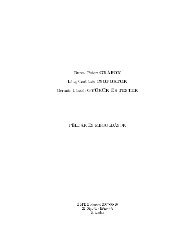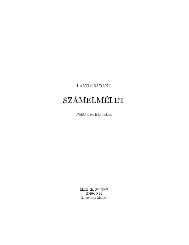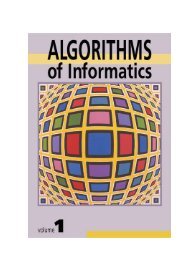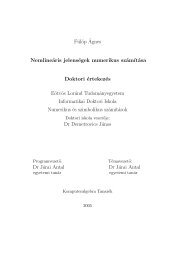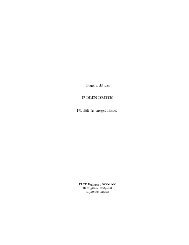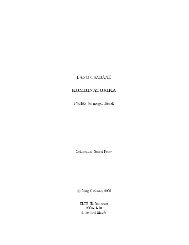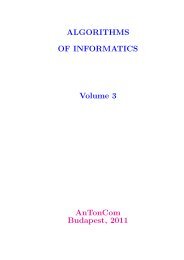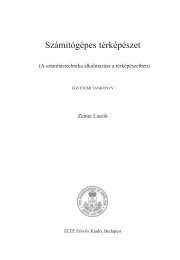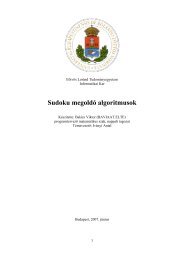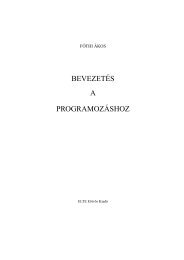On Erd˝os-Gallai and Havel-Hakimi algorithms
On Erd˝os-Gallai and Havel-Hakimi algorithms
On Erd˝os-Gallai and Havel-Hakimi algorithms
Create successful ePaper yourself
Turn your PDF publications into a flip-book with our unique Google optimized e-Paper software.
<strong>On</strong> Erdős-<strong>Gallai</strong> <strong>and</strong> <strong>Havel</strong>-<strong>Hakimi</strong> <strong>algorithms</strong> 3<br />
<strong>and</strong> m = n, then we use the terms n-bounded, n-regular, n-even, <strong>and</strong> ngraphical<br />
(or simply bounded, regular, even, graphical).<br />
In the following we deal first of all with regular sequences. In our definitions<br />
the bounds appear to save the testing <strong>algorithms</strong> from the checking of such<br />
sequences, which are obviously not graphical, therefore these bounds do not<br />
mean the restriction of the generality.<br />
The paper consists of nine parts. After the introductory Section 1 in Section<br />
2 we describe the classical <strong>algorithms</strong> of the testing <strong>and</strong> reconstruction of<br />
degree sequences of simple graphs. Section 3 introduces several linear testing<br />
<strong>algorithms</strong>, then Section 4 summarizes some properties of the approximate<br />
<strong>algorithms</strong>. Section 5 contains the description of new precise <strong>algorithms</strong> <strong>and</strong><br />
in Section 6 the running times of the classical testing <strong>algorithms</strong> are presented.<br />
Section 7 contains enumerative results, in Section 8 we report on the<br />
application of the new <strong>algorithms</strong> for the computation of the number of score<br />
sequences of simple graphs. Finally Section 9 contains the summary of the<br />
results.<br />
Our paper [37] written in Hungarian contains further <strong>algorithms</strong> <strong>and</strong> simulation<br />
results. [36] contains a short summary on the linear Erdős-<strong>Gallai</strong><br />
algorithm while in [38] the details of the parallel implementation of Erdős-<br />
<strong>Gallai</strong>-Enumerating are presented.<br />
2 Classical precise <strong>algorithms</strong><br />
For a given n-regular sequence b = (b1, . . . , bn) the first i elements of the<br />
sequence we call the head of the sequence belonging to the index i, while the<br />
last n − i elements of the sequence we call the tail of the sequence belonging<br />
to the index i.<br />
2.1 <strong>Havel</strong>-<strong>Hakimi</strong> algorithm<br />
The first algorithm for the solution of the testing problem was proposed by<br />
Vaclav <strong>Havel</strong> Czech mathematician [28, 54]. In 1962 Louis <strong>Hakimi</strong> [26] published<br />
independently the same result, therefore the theorem is called today<br />
usually as <strong>Havel</strong>-<strong>Hakimi</strong> theorem, <strong>and</strong> the method of reconstruction is called<br />
<strong>Havel</strong>-<strong>Hakimi</strong> algorithm.<br />
Theorem 1 (<strong>Hakimi</strong> [26], <strong>Havel</strong> [28]). If n ≥ 3, then the n-regular sequence<br />
b = (b1, . . . , bn) is n-graphical if <strong>and</strong> only if the sequence b ′ = (b2 − 1, b3 −<br />
1, . . . , bb1 − 1, bb1+1 − 1, bb1+2, . . . , bn) is (n − 1)-graphical.



